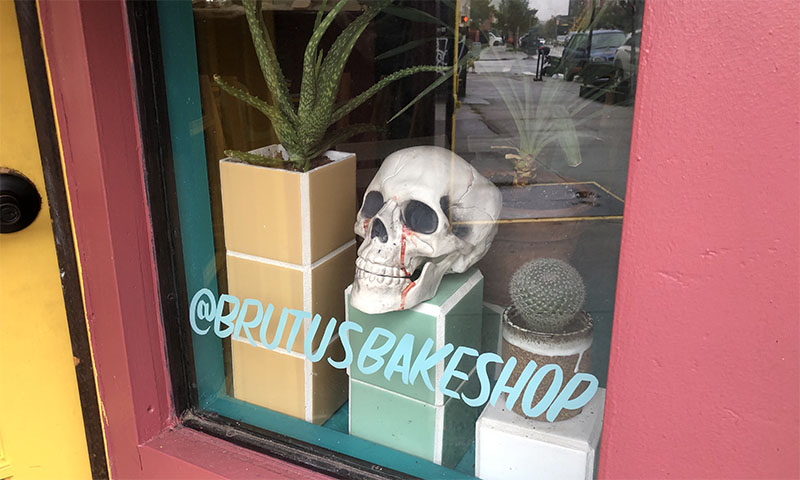
By Noel Stevens | Jan. 26, 2021
Like many New York restaurants, Awkward Scone in Bushwick was struggling during the pandemic. But instead of simply shutting its doors, owner Eric See moved to another neighborhood. See opened Ursula, a takeout-centric café and bakery, in Crown Heights, Brooklyn, in September.
Named after See’s grandmother, Ursula features a smaller footprint than his prior space and no indoor dining. He conceptualized and opened the café within a matter of weeks. “My gas didn’t get turned on until like two days before we opened,” See recalled. The place embraces his New Mexican roots, offering breakfast burritos, blue corn scones, and vegan chiles rellenos.
According to a report issued by the New York State Comptroller, about one-third to one-half of New York City restaurants are expected to close permanently because of the COVID-19 pandemic. The report also mentioned that job loss could be offset by the opening of new restaurants, like See’s Ursula.
See was motivated to open a new place for several reasons, but mostly because he wanted to continue being his own boss. “I don’t know what else I would do,” he said. “I didn’t really care to work for somebody else in the middle of a pandemic.”
Despite being understaffed at the beginning, Ursula has attracted some press coverage and a significant number of customers. “There’s just this understanding of how to get your food to-go,” said Grant Rossi, a barista at Ursula.
The format also seems inherently friendly to COVID regulations. Rossi recalled dealing with only one customer who did not follow mask guidelines. He attributes this single incident to both the restaurant’s concept and the type of crowd See attracts.
Having a new restaurant in the neighborhood is a welcome sign for some residents. “It feels more exciting to go into places like this because I don’t think of what the place used to be like,” Aster Ryan, a customer at Ursula, said.
Since the coronavirus outbreak, only two new restaurants have opened in Crown Heights: Ursula and a Burmese eatery named Rangoon. In other neighborhoods, coffee places and restaurants are adjusting in different ways.
Stephanie Peschiera, an advisor at Baruch College’s Small Business Development Center, believes a restaurant’s model makes all the difference right now, but also points to the importance of location. She has observed that the increase in employees working from home has been a boon to restaurants in more residential areas.
“It’s really looking like neighborhoods that are primarily commuter destinations like Midtown and Flatiron are going to continue to struggle, whereas in Brooklyn there’s a lot of residents,” Peschiera said.
Ciao Bella Coffee in Brooklyn’s Flatbush neighborhood, owned by spouses Marco Mento and Jessica Michel, was initially forced to close because of the pandemic, only two weeks after its grand opening. The 32-year-old former professional musician from Switzerland was inspired by his Italian family and his experience as a barista to open the coffee shop. Michel, a 29-year-old Brooklyn native, kept her day job in human resources and helps him when she can.
“When we opened, we did a party here the first day, a lot of people were here,” said Mento.
The direness of the city’s coronavirus outbreak became much more apparent. The shop is located a few blocks from Kings County Hospital, with many of the shop’s customers working there.
Following the executive order that halted New York’s indoor dining in mid-March, Ciao Bella remained closed for a little under two months. It has since reopened as Mento and Michel continues to navigate coronavirus restrictions. The couple has been keeping customers updated on their evolving policies through Instagram while slowly increasing capacity and adding back live music performances outside.
The couple was able to stay in business, but Michel is not planning on quitting her other full-time job any time soon. Both owners acknowledged how volatile their business can be, especially during a pandemic.
The outlook for eateries may be bleak across the city, but many are finding ways to survive or even thrive in the age of the coronavirus. Peschiera, from Baruch College, says she has faith faith in the resiliency of restaurant owners.
“They deal with putting out multiple fires at a time under normal circumstances; if anybody is equipped to deal with the challenges of COVID, it’s restaurant owners,” she said.


